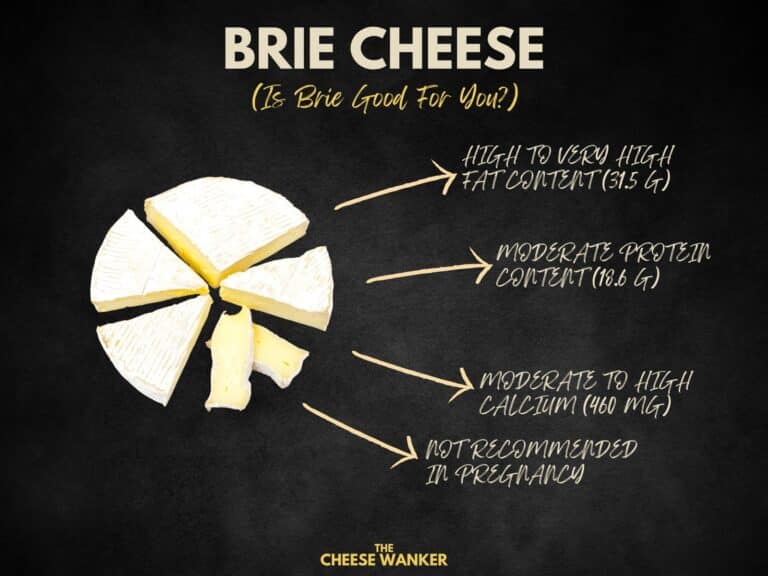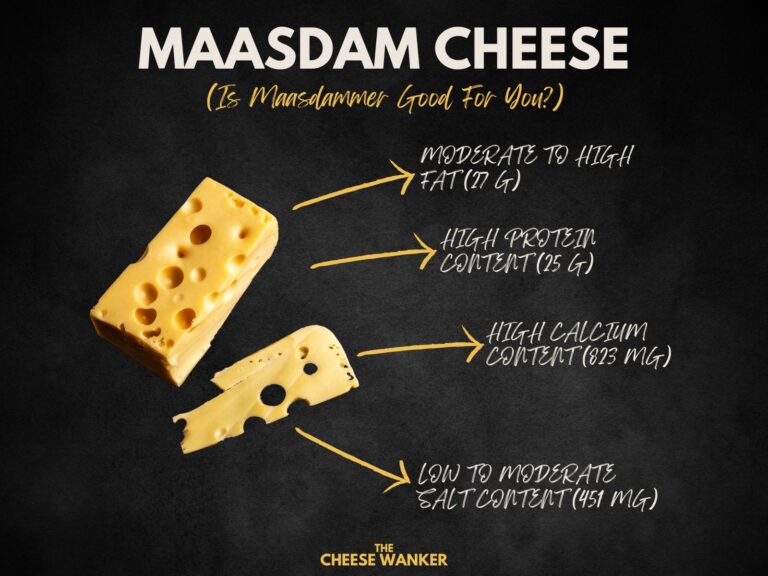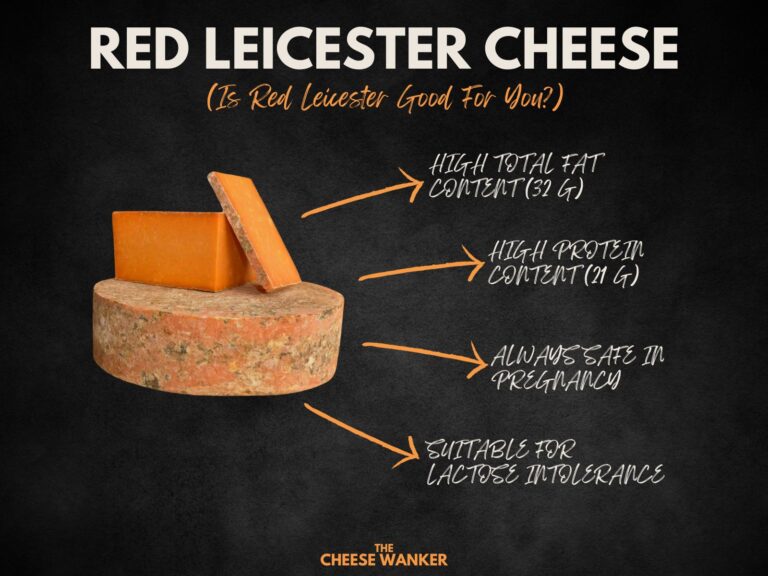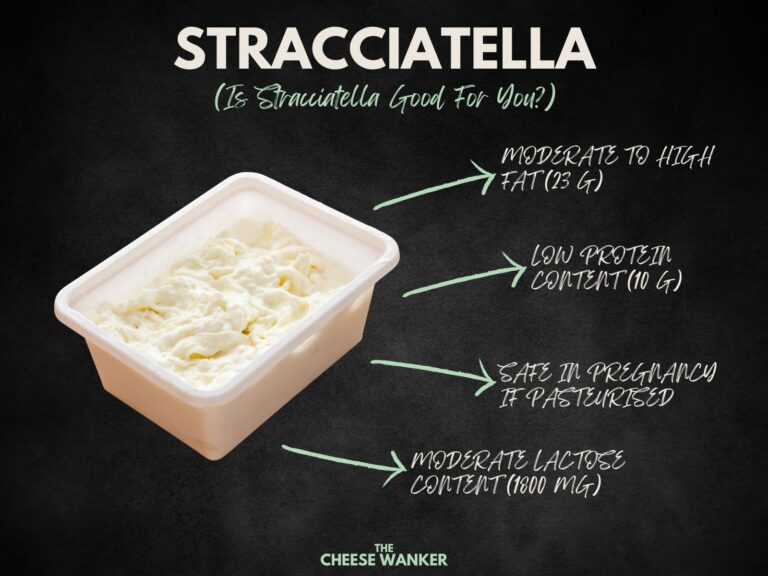Taleggio cheese is a semi-soft washed rind originating from the Lombardy region of Italy. It is made from raw cow’s milk and has a tangy, fruity flavour with a pungent aroma. In this blog post, we will discuss the nutrition facts of Taleggio cheese, including lactose intolerance, fat content and its safety in pregnancy.
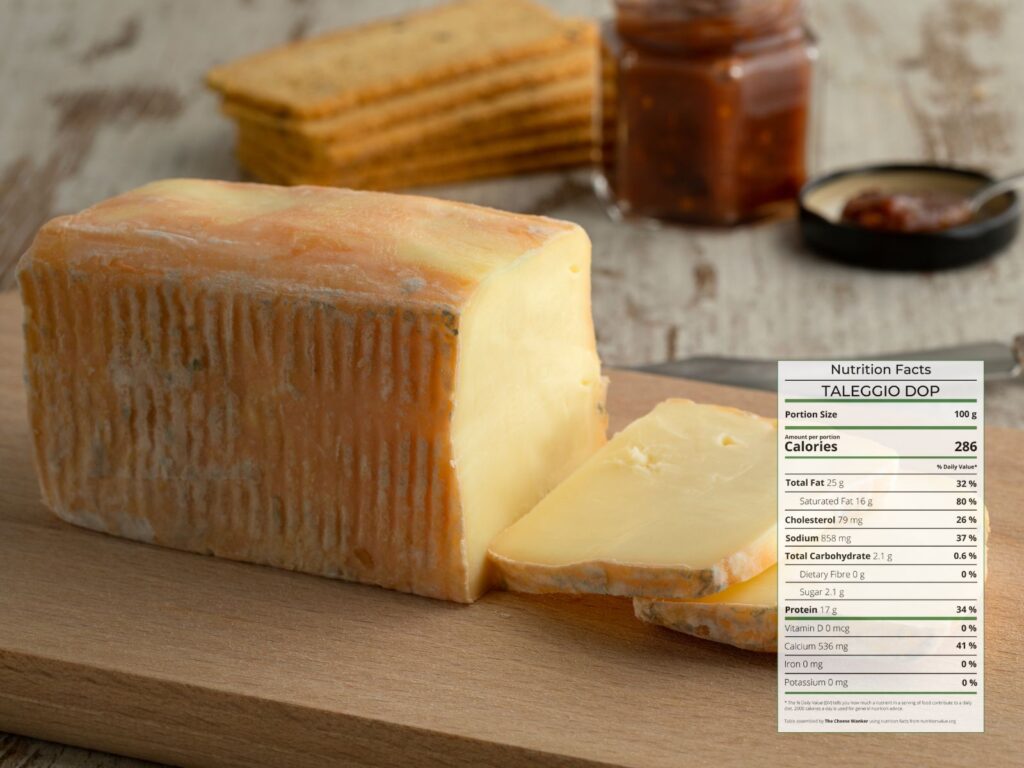
SEE ALSO: Nutrition facts for popular world cheeses in The Cheese Wanker’s index →
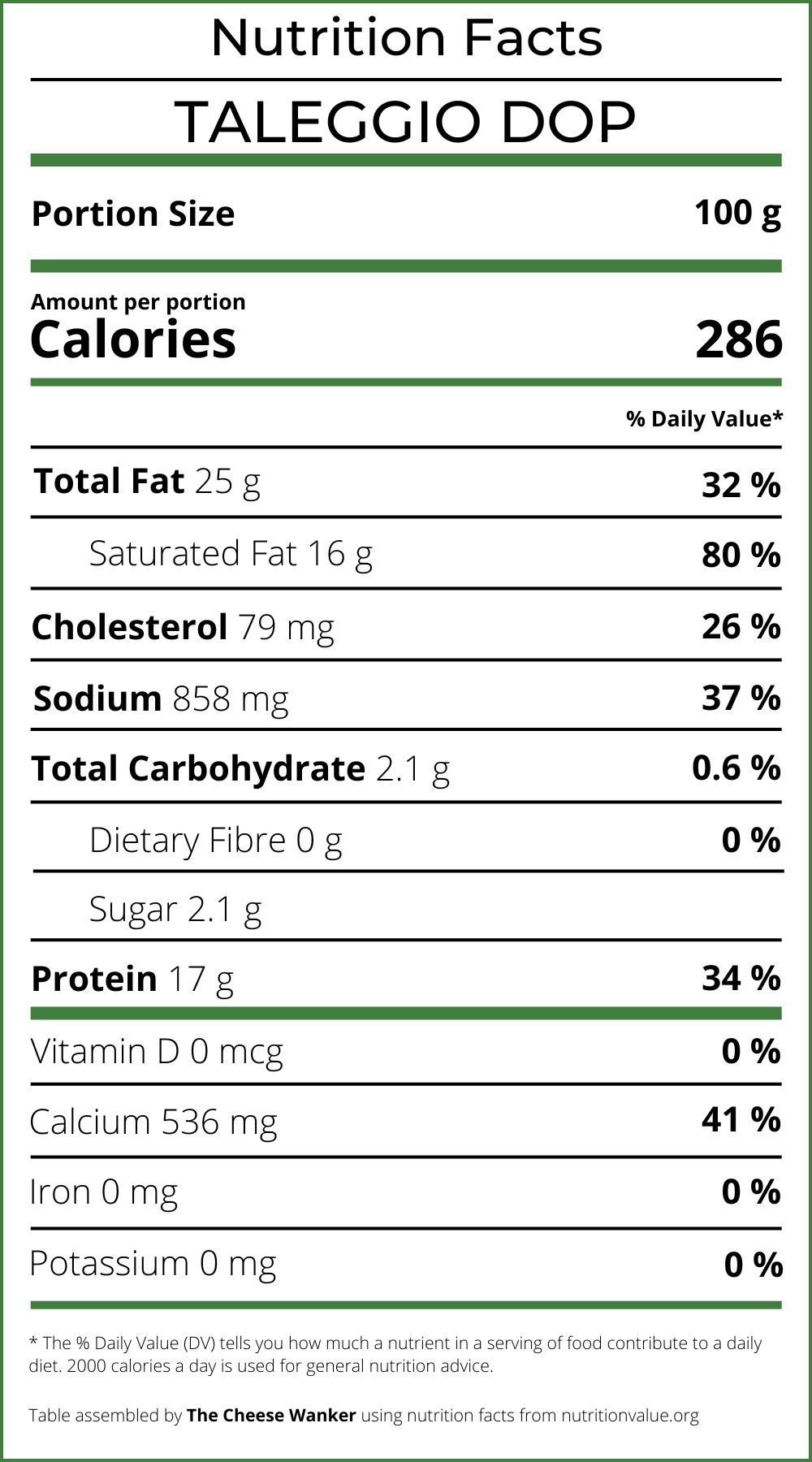
Nutrition Facts Summary for Taleggio
Without a doubt, Taleggio is a versatile cheese and can be used in a variety of dishes, including sandwiches, pizzas and pasta.
Here are some of its key nutrition facts:
Lactose Intolerance
If you are lactose intolerant, you may be wondering if you can consume Taleggio cheese. According to the product labelling, Taleggio contains approximately 0.1g of lactose per 100g serving.
This amount is relatively low and should not cause any adverse reactions in individuals with lactose intolerance. However, if you have severe lactose intolerance, it is best to try a very small amount of this cheese first.
Find out everything you’ve ever wanted to know about lactose free cheeses by clicking here.
Fat Content
Taleggio is a high-fat cheese, with approximately 25g of fat per 100g serving. However, not all fats are bad for you. Indeed, this Italian washed rind is rich in monounsaturated fats, which can help lower cholesterol levels and reduce the risk of heart disease. However, it is still essential to consume cheese in moderation as it is high in calories.
Moreover, it is a good option for people following a ketogenic diet. You can learn more about the keto diet and which cheeses are most keto-friendly by clicking here.
Protein Content
Furthermore, Taleggio is also a good source of protein, with approximately 17g of protein per 100g serving. Protein is essential for building and repairing tissues in the body and is an important nutrient for maintaining muscle mass.
Want to find out which cheeses have the highest protein content? Click here for our blog post covering this topic.
Safety in Pregnancy
Pregnant women are advised to avoid consuming soft cheeses made from raw milk due to the risk of Listeria infection. Even though most versions of Taleggio are made with pasteurised milk, health authorities advise against eating this cheese if you’re pregnant. The reason for this is its rind.
Having said that, you can definitely cook Taleggio into a delicious dish such as a Grilled Cheese Sandwich or a Mushroom Melt.
You can read more about which cheeses are safe to eat when you’re pregnant by clicking here. As always, if unsure, you should consult your doctor.
Salt Content
Finally, Taleggio is a very salty cheese, with approximately 2.2g of salt (858 mg of sodium) per 100g serving. Consuming too much salt can lead to high blood pressure, which increases the risk of heart disease and stroke. Therefore, it is essential to consume Taleggio cheese in moderation.
Conclusion
To conclude, Taleggio is a delicious and incredibly versatile cheese that can be used in a variety of dishes. It is a good source of protein and monounsaturated fats, but it is also high in calories and salt.
Individuals with lactose intolerance can consume Taleggio in moderation, but pregnant women shouldn’t eat this Italian cheese unless it has been thoroughly cooked. As with all foods, it is essential to consume Taleggio cheese in moderation as part of a balanced diet.
References
Overall nutritional content
The nutritional content of cheese in our table comes from the USDA Food Data Central Repository, the Australian Food Composition Database and cheese manufacturers. We realise that there can be variations between different brands and producers. Hence, the numbers we have used are averages.
Fat content
Our fat RDI data comes from Cleveland Clinic’s Healthy Fat Intake resource.
Type of fat in cheese as per Harvard T.H. Chan’s The Nutrition Source.
Protein content
Our protein RDI data comes from Harvard Medical School’s Harvard Health Publishing.
Cholesterol content
Is There a Correlation between Dietary and Blood Cholesterol? Evidence from Epidemiological Data and Clinical Interventions? – Maria Luz Fernandez and Ana Gabriela Murillo
Saturated fat, carbohydrate, and cardiovascular disease – Patty W Siri-Tarino, Qi Sun, Frank B Hu and Ronald M Krauss
Effect of cheese consumption on blood lipids: a systematic review and meta-analysis of randomized controlled trials – Janette de Goede, Johanna M Geleijnse, Eric L Ding, Sabita S Soedamah-Muthu
Safety in pregnancy
All the advice relating to what cheeses you can eat during pregnancy in this article is based on the recommendations by health authorities in Australia, the UK and the USA. If you are unsure about what you can or cannot eat, please consult your doctor.
Australia – FSANZ, United Kingdom – NHS and United Sates of America – FDA
Lactose content
Lactose residual content in PDO cheeses
Detection of lactose in products with low lactose content
The analysis of lactose in milk and cheese products by HPLC
Food Standards ANZ Food Composition Database
Lactose & Galactose content of cheese
